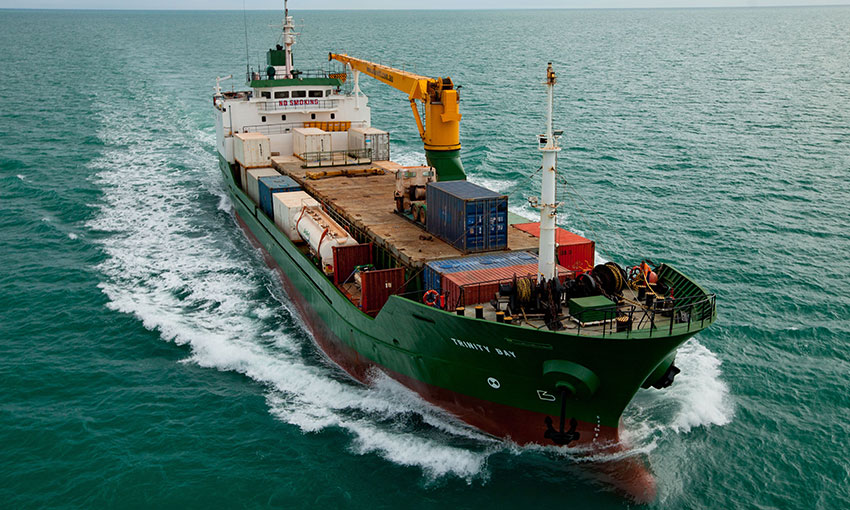VOYAGE planning errors and spurious false alarms contributed to the grounding of general cargo ship Trinity Bay, the Australian Transport Safety Bureau has found.
The 81-metre Australian-flagged vessel grounded on Harrington Shoal on 19 January 2021 while transiting the Great Barrier Reef.
Trinity Bay sustained minor hull damage (some dents and paint stripping) and was refloated on the rising tide. No injuries or pollution were reported.
The ATSB has been investigating the grounding and released its final report on Thursday (22 June).
The investigation found that, in an effort to address a deficiency identified during an internal audit requiring the use of approved routes and waypoints, the ship’s master had used a draft passage planning tool that was being trialled by the operator to plan new routes.
ATSB said the routes from the planning tool were entered into Trinity Bay’s electronic chart system, a navigation information system which displayed the vessel’s position and relevant nautical chart data.
However, it said the electronic chart system was not approved for use as the ship’s primary means of navigation and did not possess automatic route safety checking functions.
“Errors in the planning tool meant the new route took Trinity Bay dangerously close to the charted danger of Mid Rock, and then about an hour later directly over the charted danger of Harrington Shoal, where the ship grounded,” ATSB director transport safety Stuart Macleod said.
“The investigation found the new passage plan was not independently verified by another of the ship’s deck watchkeeping officers, as required by the operator’s procedures, and the planned routes were entered into the electronic chart system instead of being annotated on the ship’s paper charts,” he said.
“In accordance with chart carriage regulations, these paper charts were the ship’s primary means of navigation and were marked with the ship’s established previously-used routes.
“Consequently, the dangers on the newly planned route were not identified, and the monitoring of the ship’s passage was ineffective in identifying these dangers.”
ATSB said the ship’s operator, Sea Swift, subsequently removed Trinity Bay’s electronic chart system from service and advised the ATSB it was investigating the fitting of electronic chart display and information systems (ECDIS) on its ships.
ECDIS is an approved navigational chart and information system that can be used in place of paper charts.
“This investigation highlights how the development and use of a detailed passage plan in accordance with the accepted principles of passage planning remains essential to safe navigation,” Mr Macleod said.
“Passage planning should be thoroughly appraised, with the route laid out and independently checked on the ship’s primary means of navigation, and then effectively monitored.”
Mr Macleod said the ATSB’s investigation also found that at the time of the grounding an ongoing technical fault in the Great Barrier Reef and Torres Strait vessel traffic service (REEFVTS) monitoring and surveillance system, meant the duty operator at the VTS Centre in Townsville was being presented with an abnormally high number of erroneous alerts and alarms.
ATSB said EEFVTS monitors and communicates with ships to ensure safe and efficient navigation in Torres Strait and the inner route of the Great Barrier Reef.
Among the genuine alarms received during that timeframe were warnings as Trinity Bay sailed close to Mid Rock, and again as it approached Harrington Shoal.
“Alerts associated with Trinity Bay were acknowledged by the duty operator but not followed up, due to the operator experiencing a sustained period of elevated workload, combined with a high level of expectancy that the ship was not at risk, as it frequently transited the area,” Mr Macleod said.
“Between the duty operator commencing their shift in Townsville at 0600, and when they were alerted by the ship’s master of the grounding at 0822, that operator received over 80 alerts from the REEFVTS monitoring and surveillance system, of which at least 42 were false, generated as a result of the system fault.”
ATSB said Maritime Safety Queensland, which operates REEFVTS, has since implemented a software update for the system, reducing the incidence of false alarms.
Further, the reporting area covered by REEFVTS was split into two, a north and a south area operated respectively from Townsville and Gladstone, with a separate operator responsible for each area.





